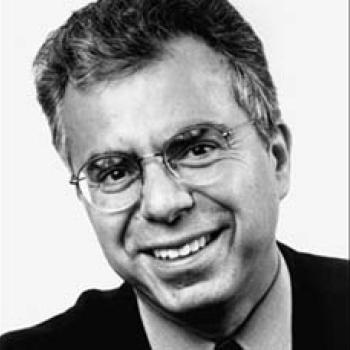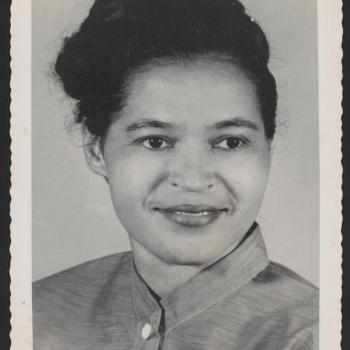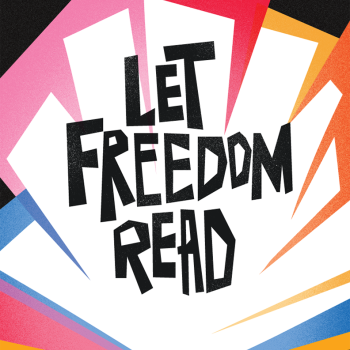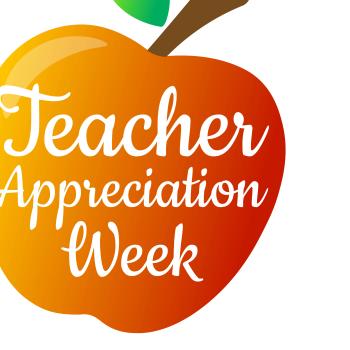
The son of a French immigrant, Paul Revere worked as a gold- and silversmith for more than 40 years in Boston, Massachusetts. In the years before the revolution, Revere gathered intelligence information by "watching the Movements of British soldiers," as he wrote in a personal account of his ride. Although he was joined by William Dawes and Dr. Samuel Prescott, it is Paul Revere who is generally remembered for making this historic midnight ride.
As you study Paul Revere, have students learn about primary source documents while researching their family histories.
Paul Revere's ancestry can be traced back to his great-great grandfather, Jean Rivoire, born in France in about 1610. Challenge your students to examine their own roots by investigating likely sources of information about their ancestors. First, discuss the differences between primary and secondary sources. Brainstorm some possible primary sources, and then have students research their family histories. Some possible sources include a family Bible, interviews with family members, a grandparent's diary or journal (with permission, of course), letters and other correspondence, or photographs.
Next, have students create a family tree from the information they have gathered. Have students compare their family trees and discuss some of these questions: How far back were students able to trace their ancestry? How many different countries of origin are represented in your students' family trees? Why might it be difficult to trace some family trees? How can students make a contribution to preserving their own family histories?
This site features the real story of Revere's historic ride. Links to other resources, including Revere's biography, are also found here.
This Archiving Early America page features a Flash movie on Revere's ride.
This page from AmericanRevolution.org offers an account of Revere's famous ride in his own words.
Read Henry Wadsworth Longfellow's poem, which immortalized Revere's famous ride. Compare Longfellow's account with Revere's own version at the Revere Speaks website above.

Since he did not have books growing up, Soto regards his own emergence as a poet as "sort of a fluke." After working as a laborer, Soto entered college intending to major in geography. While in school he realized that he wanted to express himself as a writer. Soto's books and poetry present vivid pictures of life in a Mexican-American neighborhood.
Soto's stories and poetry evoke memories and images of home, family, and community. Use one of his works, such as Too Many Tamales or Baseball in April as a basis for exploring these themes. Try one of these activities:
- Too Many Tamales is about a family preparing food for their Christmas celebration, and the children who share in the preparations. Invite students to share a story about their part in a special family event. Extend this idea using the lesson My Family Traditions: A Class Book and a Potluck Lunch, which asks students to share recipes and information about their own family traditions.
- The streets and neighborhoods of Fresno, California are an integral part of Soto's stories. Invite students to describe their street.
- Ask students to compose an acrostic poem that describes a person, place, or event they cherish using the Acrostic Poems interactive tool.
Visit Soto's official website for information about the author. Visitors can find a catalog of his works, biographical information, and frequently asked questions.
Houghton Mifflin provides this brief biography of Soto, along with a selected bibliography and a recipe for one of Soto's favorite foods-frijoles.
This essay, provided by Georgetown University, offers classroom strategies for working with Soto's poems, as well as information about the major themes and style elements found in his work.
In this Webcast from the Library of Congress, Soto discusses his writing and reads selections from his novel "Poetry Lover" at the 2001 National Book Festival.

TeenTober is a nationwide celebration hosted by libraries every October and aims to celebrate teens, promote year-round teen services and the innovative ways teen services helps teens learn new skills, and fuel their passions in and outside the library. TeenTober allows libraries the flexibility to choose what to celebrate (digital literacy, reading, technology, writing, etc) and the length of time for each celebration.
Celebrate this year's TeenTober by encouraging your middle or high school students to:
- Join a book discussion group at their school or public library.
- Read biographies of their favorite musicians, comedians, politicians, or sports figures.
- Read books about a hobby that interests them.
- Read books that approach a subject through humor.
- Read what they want to read, just for the fun of it.
The official website for TeenTober includes information on getting ready, registering, and celebrating the month-long event with young adults.
Have students check out the Young Adults' Choices list, a collection of books selected by teams of teenage reviewers.
Learn about more books for teens through this ReadWriteThink.org podcast series. Review past episodes and subscribe so that you don't miss future ones.
This blog includes information about books for young adults, including reviews and links to podcasts.

The Bill of Rights was ratified by three-fourths of the newly formed United States in 1791 to ensure individual rights that were not addressed in the United States Constitution. These first 10 amendments to the Constitution enumerate and protect many of our rights, including freedom of speech, worship, the press, and assembly.
Bill of Rights Day is a good opportunity for students to explore a variety of students' rights issues. Ask students to identify an issue that has come up in your school, such as dress codes, drug testing, zero tolerance, privacy, religion, or freedom of expression. Have them explore the ways in which the Bill of Rights protects and does not protect students, as well as some of the past and recent challenges to students' rights. Have students write position papers or debate individuals or teams of students with opposing points of view. The American Civil Liberties Union (ACLU) Student Rights page has information and articles about recent court cases focused on students' rights.
Students can continue to explore the Bill of Rights by examining the ways in which it applies to current events and issues such as homeland security, prisoners' rights, the death penalty, and more. Provide access to a daily newspaper. Then ask students to construct a scrapbook or bulletin board display of articles that address Bill of Rights issues.
This website from the United States National Archives offers a look at the actual Bill of Rights, with links to high-resolution images and related information.
This ACLU resource provides a brief history of the Bill of Rights and the rationale for the creation of these 10 amendments to the United States Constitution.
This resource featured on Ben's Guide to the U.S. Government for Kids provides information about citizenship and the Bill of Rights.
This online exhibit includes images of many original documents and describes how the Bill of Rights was passed.

Rosa Parks (1913–2005) is best known for her refusal to give up her seat to a white man on a crowded bus in Montgomery, Alabama, on December 1, 1955. Her arrest sparked the Montgomery Bus Boycott, a pivotal event in the civil rights movement that ultimately led to the dismantling of Jim Crow segregation. Rosa Parks became an icon of the movement, celebrated for this single courageous act of civil disobedience, but she is often characterized by misconceptions. Contrary to popular belief, Parks was not a demure seamstress who chose not to stand because she was physically tired. Her calm demeanor hid a militant spirit forged over decades. Learn more about her and her life by exploring these primary sources.
Explore the sites and online exhibitions listed below. Ask students what they can learn from these primary sources about why Rosa Parks took her stand against segregation, and about the organizations and movements that participated in the struggle. They might compare that to what they learn from a textbook or other secondary source and then write a possible update for the secondary source.
It's important that students understand the difference between primary and secondary sources. Visit here for a solid definition and see some examples.
Rosa Parks: In Her Own Words showcases rarely seen materials that offer an intimate view of Rosa Parks and documents her life and activism—creating a rich opportunity for viewers to discover new dimensions to their understanding of this seminal figure.
This gallery showcases a selection of items from the Rosa Parks Papers at the Library of Congress, a gift from the Howard G. Buffett Foundation. This collection contains thousands of items that document the life, work, and legacy of this civil-rights legend.
In honor of the birthday of civil rights legend Rosa Parks, this blog highlights the many cards and letters students wrote for Ms. Parks over the years.
The Rosa Parks Collection, which is on loan to the Library for 10 years from the Howard G. Buffett Foundation, spans from 1866-2006 and contains 7,500 items and 2,500 photographs.

Join NEA’s Read Across America to celebrate a nation of diverse readers with these recommended books, authors, and teaching resources that represent an array of experiences and cultures.
Read Across America has celebrated books and reading since 1998. This year, there are even more opportunities:
• Encourage adults to spend more time reading to children
• Share stories that raise up the many voices that need to be amplified and heard
• Use books to help students discover their own voices and learn from the voices of others
• Encourage readers to believe in themselves and use their voices and stories for positive change
Use the Read Across America Day calendar, Build Your Stack® posts, and ReadWriteThink.org resources to support these efforts.
Join NEA to celebrate a nation of diverse readers with these recommended books, authors, and teaching resources that represent an array of experiences and cultures.
NEA is excited to bring Read Across America year-round to help motivate kids to read, bring the joys of reading to students of all ages, and make all children feel valued and welcome.
Review the recommended titles in this calendar and the Read Across America poster.
This NCTE initiative is focused exclusively on helping teachers build their book knowledge and their classroom libraries.

Sponsored by the Alliance for Excellent Education, Digital Learning Day has since 2012 encouraged teachers to share and celebrate effective teaching and learning that showcases innovation in the use of digital instructional technology. Though Digital Learning Day does promote the effective use of contemporary tools and technologies, it is truly a day to reflect on the enhanced or transformed learning those tools support.
Ask students to reflect on something they recently learned how to do. After a few minutes to write or talk with a partner, have students share what they learned as you record their topics for everyone to see. Then lead a discussion around the role digital tools played in the different learning students shared.
-
How many of the examples were about learning to use a new digital tool?
-
How many examples featured students using a digital technology to facilitate or support their learning?
-
Which examples can students imagine doing differently with the support of a digital tool?
Then have students reflect on the varied ways digital learning plays a part in their everyday lives.
This page houses a collection of resources from past Digital Learning Days.
Find inspiration from a lesson plan from the Alliance for Excellent Education, arranged into themes such as language arts, STEM, and digital citizenship.
This collection of ReadWriteThink resources offer additional inspiration for considering the role digital technology can play in student learning.
Need help defining 21st Century literacies or the implications for classroom practice? This collection of NCTE documents can help.

A resident of the United States, Eve Bunting was an acclaimed author of picture books and novels. Bunting's picture books tackled sensitive issues such as homelessness, death, aging, and war. Her books won numerous awards, including the Golden Kite Award and a Caldecott Medal in 1995 for Smoky Night. Eve Bunting passed away in 2023.
One trademark of Bunting's picture books is her ability to see events through the eyes of a child. Smoky Night deals with the Los Angeles race riots as seen from the perspective of a young boy watching the fires and the looters. His reactions to this event are, understandably, different from those of his mother and neighbors. Before reading this picture book aloud to students, read them a news article that relates the details of the events in Los Angeles. Ask students how a younger observer might be affected by these events and might see the events differently than an adult. After reading Smoky Night, assess the accuracy of students' perceptions.
As an alternative or follow-up activity, have students locate and read two different accounts of the events of September 11, 2001, one written by an adult and one written by a child. Ask them to compare the two accounts.
This page from the Reading Rockets website includes the text of an interview with author Eve Bunting, several audio clips of the interview, and an annotated list of some of her most popular books.
Kidsreads.com offers a brief biography of Bunting and links to information about a few of her books. The biography is written simply, so it is an excellent resource for younger students to obtain biographical information on Bunting.
This feature from Scholastic includes a brief biography of Bunting, the transcript of an interview with her, and a bibliography of her books.
Houghton Mifflin offers this collection of classroom activities for use with several of Bunting's books, including Train to Somewhere, The Wednesday Surprise, and The Memory String.

Challenges to books and other materials are on the increase in school and public libraries (see ALA's Frequently Challenged Books page for details). Check out the list of titles that NCTE has worked to protect! Banned Books Week, celebrated September 22-28, 2024, draws attention to the issue of censorship and how it can best be combated.
Begin by polling students. Ask how many of them are familiar with the following titles:
- Captain Underpants series
- A Wrinkle in Time
- The Adventures of Huckleberry Finn
- The Harry Potter series
- The Higher Power of Lucky
- Scary Stories to Tell in the Dark
- In the Night Kitchen
- Bridge to Terabithia
- The Stupids series
- The Bluest Eye
After the poll is completed, ask students what they think those titles have in common. Answer: They are all censored or challenged books.
With the class, brainstorm reasons these books might have come under attack. (Be certain to have the answers for them, too. They are available from various sources, including the American Library Association's Frequently Challenged Books page.) Why do people object to books and try to have them banned? Are there books from which students should be sheltered? Identify the common reasons why books are challenged (language, sexual content, political incorrectness, religious content, and so forth).
This site offers resources for celebrating Banned Books Week. Included are Banned Books Week news, events and materials.
The Online Books Page presents a brief look at book banning with links to online texts of books banned by legal authorities and schools.
The National Coalition Against Censorship, an alliance of fifty-two participating organizations, is dedicated to protecting free expression and access to information.
NCTE offers advice, helpful documents, and other support at no cost to teachers faced with challenges to literary works, films and videos, drama productions, or teaching methods.

Since 1984, the National PTA has designated time each May for communities nationwide to honor teachers for their work with children. Parents, students, and schools across America celebrate Teacher Appreciation Week to show appreciation for the work and dedication of teachers and reaffirm the commitment to parent-teacher partnerships.
In celebration of Teacher Appreciation Week, read a book about a teacher such as Thank You, Mr. Falker, Miss Nelson is Missing, or a Magic School Bus story with Ms. Frizzle. Why are the teachers in these stories special? Have a class discussion about some of your students' favorite teachers. Then have students try these follow-up activities:
- Compare a favorite teacher to a teacher from a book with the Interactive Venn Diagram.
- Write a letter to a favorite teacher using the Letter Generator.
- Create a character map of either Miss Nelson or another storybook teacher with the Story Mapping tool.
- Use the Essay Map to plan and write an essay on why they would or would not like to be a student in one of the storybook teachers' classrooms.
- Read and present another book about a special teacher. Older students may choose books like The Miracle Worker by William Gibson, Tuesdays with Morrie by Mitch Albom, or A Lesson Before Dying by Ernest Gaines.
This National PTA resource offers ideas to help parents, students, and schools honor teachers during Teacher Appreciation Week.
The National Education Association offers these activities, appropriate for a Teacher Appreciation Week celebration.
This page from Reading Rockets celebrates teachers through notes of appreciation from parents, videos of authors and illustrators talking about their favorite teachers, and a link for users to send their own e-cards to teachers they appreciate.